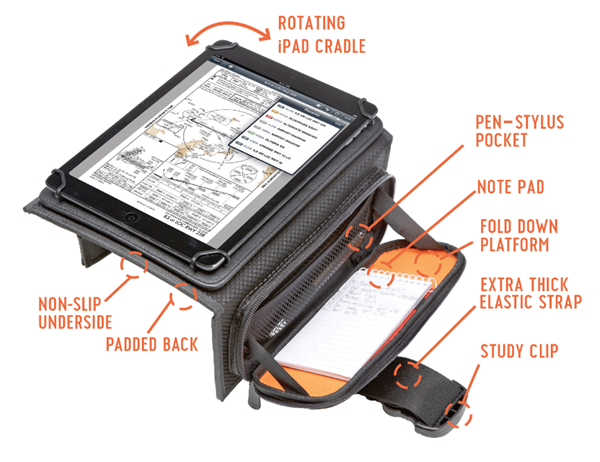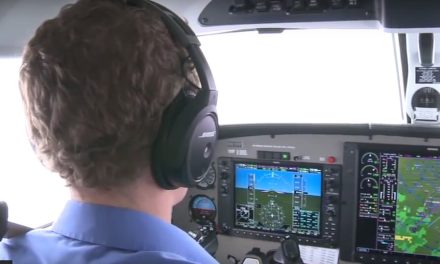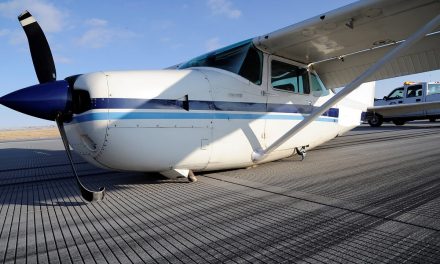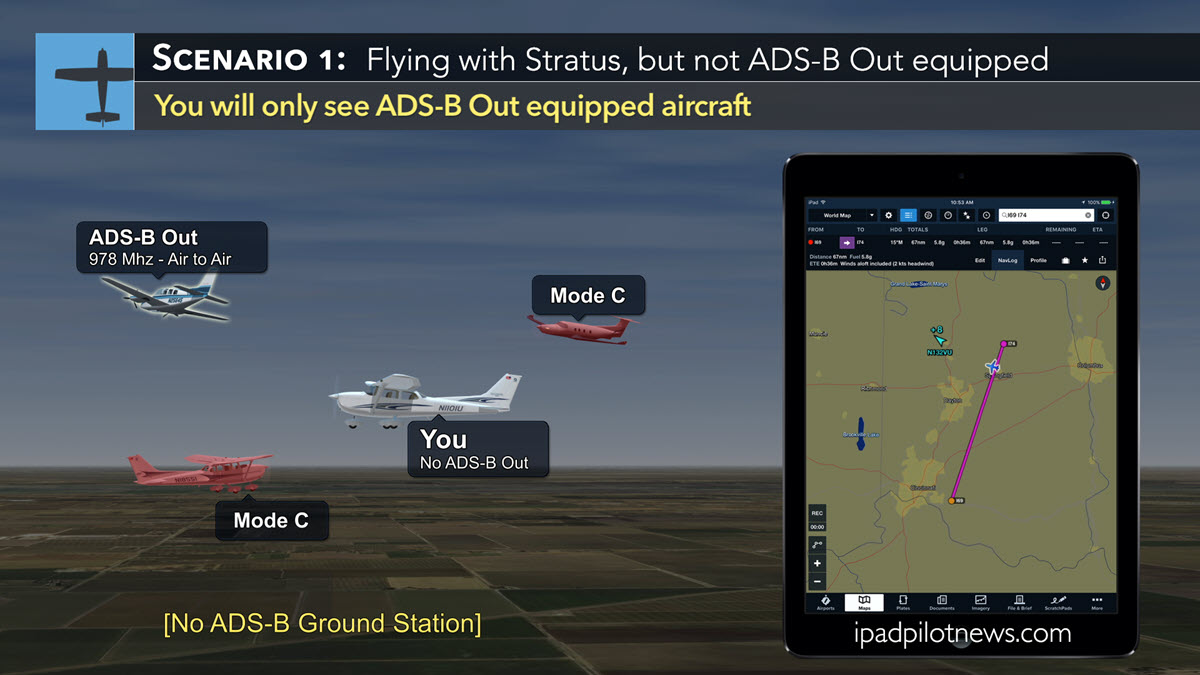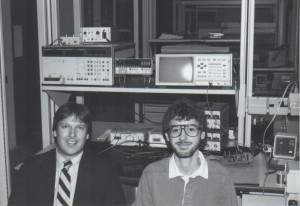 By Bob Hart – www.AvionixHelp.com
By Bob Hart – www.AvionixHelp.com
In the 1950s, General Aviation aircraft were basic and, most often, used for fun or simple transportation. The notion of spending time in the clouds in a small, relatively slow-moving personal airplane hadn’t yet come to light and the technology needed to do so was primitive.
As interest grew and technology came along, so did the concept of redundancy, as in dual comms and nav sources (though strictly ADF- and VOR-based), and along with that came the need to control them—or, back then, the ability to switch between the available comm and nav equipment in the airplane. Such controls were called audio panels and, in 1965, they were mere switchboxes. You simply threw a switch or pushed a button and you were connected to the comm or nav you intended to use, but your options were limited. You had two comms, each with just one frequency available at a time. No flip-flop. No “bells and whistles.” Your nav options were equally deficient, but all that would change.
In 1969, my Cherokee Six had Narco avionics, including dual MK-12Bs and a CP-126 push-button audio panel. When you pushed one button, another would pop out; and frequently, the little plastic button that popped out would become a projectile that ended up in the back seat—not good! Back then, Narco was the dominant avionics manufacturer. Meanwhile, King was just getting started and offered their KMA-12; and, a little while later, Collins made inroads into GA with their AMR-350.
The King and the Collins units used toggle switches instead of buttons. Based on my avionics consulting experience, I discovered that most pilots preferred the toggle switch concept because they could more easily see how the audio panel was set. Plus, they didn’t need to retrieve buttons from the back seat—a big plus when soloing IFR! Of course, back then no one thought about lighting the buttons which, once accomplished, totally changed the equation.
For the most part, audio panels remained simple switchboxes through the ’70s. One notable exception, however, was the incorporation of a marker beacon receiver and lights into the units. I guess you could call this the first step in audio panel integration, but we still had a long way to go before the audio panel would become an important avionics tool, especially for the IFR pilot. PS Engineering would be the company to change that.
If you’re planning to upgrade your audio panel, consider this your comprehensive guide to today’s amazing audio control panels.
In the ’50s, ’60s and even into the ’70s, the concept of an intercom for GA aircraft was not yet developed. Pilots didn’t wear headphones. Instead, they simply yelled at each other over the high ambient noise level of the aircraft. Of course, this made it difficult to not only hear communications between pilot and co-pilot, but between pilots and ground and pilots in other aircraft. Not to mention the fact that the overall quality of aircraft radios back then left a lot to be desired. It was the lack of a good GA intercom that first motivated Mark Scheuer, founder of PS Engineering, to get into the GA audio business and to develop PS Engineering’s first product, the Aerocom portable intercom. Like their audio control panels, the Aerocom (now the Aerocom III) has evolved through the years and is still marketed by PS Engineering.
As a 19-year-old college student attending Business Management courses, the idea of finding a niche and then building a business around that niche made sense to me, even back then. That concept has never been proven truer than in aviation, and it’s exactly what Mark Scheuer, founder of PS Engineering, set out to do in 1985. Add a heavy dose of R&D and an understanding of exactly what pilots want and you have a recipe for success. Now, let me put that success in perspective.
The Aircraft Electronics Association (AEA) is made up of avionics manufacturers and virtually all of the better avionics shops, repair stations, and installers in the U.S. and beyond. Through a survey of their members, the AEA determined that nearly half of all audio control systems (that includes intercoms and audio panels) purchased today comes from PS Engineering! I know I helped. As an avionics consultant for 18 years, PS Eng has been my go-to company, my recommendation to my customers, and now, my consultant clients for audio control systems. That’s also why the AEA named PS Engineering their Associate of the Year for 2014. PS Eng makes and sells only audio control systems for GA aircraft. From your basic Cessna 150 to a Citation, from your Piper Cherokee 140 to a Cheyenne, PS Eng has the right audio solution.
Intercom Development
PS Engineering got its start in 1985 when electrical engineer, Mark Scheuer, hired Eric Persson, (Persson + Scheuer = PS Engineering! Working out of Scheuer’s garage, their first task was to design and provide a good, portable intercom. It was a logical start. Most aircraft that needed an intercom back then already had an audio panel, but the intercom market was almost non-existent. Thus, the Aerocom was born. With a portable unit, you simply plugged it into your aircraft and off you went. With the Aerocom also came the launch of their first innovation, individually gated microphones. It was a huge success and led to the development of their panel-mount models: first, the PM1000 (now the PM1000II) with mono music, and later, the PM2000 (now the PM3000) that offered stereo music reproduction. These units were designed to complement an existing audio panel and provide cockpit communications in 2, 4, or 6-place aircraft.
Early in my avionics career, I heard complaints from pilots about another seemingly popular brand of intercoms. The complaints were that there either wasn’t enough volume or that the volume had to be cranked-up so high in order to hear, that the result was increased distortion. That’s what happens if your intercom amplifier is underpowered or “anemic.” It was that sales experience that pointed me towards PS Engineering as my go-to audio company. PS Eng intercoms have plenty of power to do the job. For very loud or open-cockpit installations, they offer the PM1200 which gives the pilot a choice between Vox (voice activated) or open-mic circuitry with the flick of a switch. The latter is a nice option because sometimes “the wind through your hair” wreaks havoc on a Vox intercom. (I bet Scheuer learned this firsthand, as I found out that both he and I had owned Grumman AA1 2-place trainers that allowed us to fly with the canopy open…too cool!)
Audio Control Panel Development
An intercom plays a basic role in the cockpit, and it’s safe to say that PS Eng played a significant role in boosting intercom quality and features when they entered the market. On the other hand, an audio control panel (calling them “audio panels” is an understatement) plays a much larger role—especially in IFR flight where pilot load increases with the environment. It is here that the features/benefits of these new “integrated” audio systems really shine.
When PS Eng entered the audio panel market, integrated marker beacons was about all there was in terms of innovation. However, the list of innovations and firsts that PS Eng has since brought to the audio industry is more than significant. Let’s review these contributions before we take a closer look at the PS Eng product line and respective features and benefits.
PS Engineering innovations and firsts in the industry:
- individually adjustable VOX intercom circuit (1985)
- digital signal processing (1988)
- digital recording of aircraft radio (1992)
- Soft Mute ™ technology (1992)
- first FAA-approved stereo audio panel (1996) and first to get it FAA-TSO’d (1998)
- first to offer IntelliVox® fully-automatic digital VOX control
- first FAA-TSO for IFE (In-flight Entertainment System) (2000)
Industry recognition is great, but it’s the features and benefits of these innovations that really matter to pilots!
- Adjustable Vox Circuits (all units) – eliminates unnecessary ambient noise through the intercom.
- IntelliVox® Automatic Intercom Squelch – eliminates adjustments to compensate for ambient noise.
- Digital Recorder Aural Warning System (DRAWS™) – offers one minute digital recording for pilot playback (clearance) with a six-channel aural warning system that monitors critical systems.
- Telephone Interface – provides full duplex phone for passengers or crew.
- Split Mode – allows pilots and co-pilots to transmit/receive simultaneously.
- Front-mounted Phone and Music Jack – provides easy access for portable music sources or non-Bluetooth phones. Features automatic music muting with Soft Mute. ™
- NEW! Front-mounted USB Charging Jack – (available on the new PMA-450 only) – Note how PS Eng is paying close attention to increased IPAD use!
- NEW! IntelliAudio® Dimensional Sound. We’ll talk about this new feature in the new PMA-450. Note: These features are not available on all units. Depending on how and what you fly, you can purchase the features you
PS Engineering Product Line
I think we’ve established that PS Eng has changed the marketplace with the addition of their intercoms and audio control panels. However, it’s also important to note that once they introduce a product they continue to improve upon it. In fact, none of the PS Eng units are the same as when they were introduced. As innovations come along, they adeptly apply the new technology to previous models. What’s also significant is the variety of models and options offered in both their intercom and their audio control panel lines. Simply put, they have the right audio solution for just about every airplane and every pilot out there. As I’ve done in the past, let me present the PS Engineering products in that light.
Intercom Products
Aerocom III – This is where it all started, but as the III indicates, this is the third generation of the original Aerocom portable intercom. There is a place for a portable intercom in some aircraft and there are a lot of cheap portable intercoms on the market, but the Aerocom III is not one of them! You get:
- clear cockpit communications for two to four places (with expansion)
- IntelliVox® automatic squelch (in a portable!?!)
- stereo music capability with either battery or ship’s power
PM-1000II – This was PS Eng’s first panel mount intercom, now in its 2nd generation. You get:
- clear cockpit communications and mono music with Soft Mute™
- PS Engineering’s “set it and forget it” manual squelch
Note: Upgraded models are available with Crew Isolate and dual music inputs, while a non-TSO’d model with IRS digital recorder is also available.
PM3000 – The PM3000 compliments any audio panel and provides stereo music capability with enough power to actually enjoy it! It provides the same features as the 1000II, but with stereo music and Soft Mute. ™
Introducing music into your cockpit communications is not only a cool concept, but it provides a form of stress relief, even in IFR conditions. With PS Engineering’s Soft Mute™ music system, music is immediately removed from the equation when something comes over the radio or someone in the cockpit speaks. This means that there is no music, no distraction, when there’s any audio activity. All intercoms have Pilot Isolate. When the pilot finds him or herself in busy controlled airspace, activating pilot isolate means that the pilot is isolated from cockpit intercom chatter or music. Upgrade to Crew Isolate (with dual music inputs) and now the pilot has the option to isolate himself from everyone or isolate the pilot and co-pilot (crew) from backseat chatter. Plus, the pilot and co-pilot can listen to jazz up front while the kids listen and sing along to rap music in the back. Soft Mute™ slowly reintroduces the music once the audio activity is gone.
Note: Upgraded TSO’d models are available with crew isolate and dual music input. There is also a non-TSO’d model with IRS digital recorder.
Audio Control Panel Products
PMA6000B – The PMA-6000 was PS Eng’s introduction into panel-mount audio control panels and was GA’s first “integrated” unit. The 6000 combined enhanced audio control with a full-featured mono intercom and built-in marker beacon receiver and lights. The “B” model is also fully TSO’d and features upgrades from the original version. It remains the world’s lowest priced FAA-certified audio control panel. At under $1200 list price, the PMA-6000B is packed with features. I’ve personally sold a ton of these! It features:
- split mode audio – allowing the pilot and co-pilot to transmit simultaneously
- switched and un-switched audio inputs for aural warning from engine and aircraft critical parameters
- marker beacons (also available without this feature…for less money)
- mono four-place intercom with All, Crew, or Pilot Isolate
- PS Eng’s “set it and forget it” manual squelch
- mono music with Soft Mute™ and dual music inputs
Note: The 6000B has no phone capability.
PMA4000 – The PMA6000B has a “little brother” designed for those with simple audio control needs. The TSO’d PMA4000 is a compact unit that can be mounted in either a 2 ¼-inch hole or mounted separately somewhere in the panel. It’s not designed for the avionics stack, but it’s a nice option if you have little room. The unit was designed with the tandem cockpit in mind, and with the exception of the intercom, its features are basic:
- simple dual comm and dual nav switching
- four-place mono intercom with IntelliVox®
- mono music input with Soft Mute™
Note: There is also a non-TSO’d version with digital recorder option available.
PMA7000B – The original PMA7000 followed shortly after the 6000 and added a stereo intercom. Another smart move on the part of PS Eng is their emphasis on ease of installation, and this shows up in the 7000B. Again, the “B” version represents a unit that has been upgraded to current standards, and those upgrades from the 6000 are significant:
- six-place intercom with IntelliVox® auto-squelch
- stereo music capability with Soft Mute™ and dual inputs
- three-comm capability with split mode transmit/receive
- full isolate capability (All, Pilot, Crew) and phone interface
- simplified replacement of King KMA-24 audio panel
(pin compatible for KMA-24 audio control functions)
NOTE: The new PMA7000M is a direct slide-in replacement for (and a significant upgrade to) the original PMA6000. The PMA7000M provides all the features of the 7000B, plus a mono intercom with IntelliVox.® It also adds Bluetooth® capability.
PMA8000B – In 2006, we saw another burst of innovation from PS Engineering with the introduction of the PMA8000. Until recently, the PMA8000 series held the flagship position at PS Eng. The original PMA8000 was targeted to provide an easy upgrade path for owners of the Garmin GMA-340. This upgrade gave former Garmin owners the benefit of IntelliVox® auto squelch not available on the 340. It was also a direct slide-in that required only a simple logbook entry. There are currently four versions of the PMA8000B and, as is always the case at PS Eng, the original 8000 has seen many upgrades. Today, the 8000B is best described as an audio CONTROL panel with an emphasis on enhanced control of your audio functions. Here are the features you’ll find in the PMA8000B and a look at each of the alternate models:
Standard features:
- six-place stereo intercom
- built-in marker beacon
- IntelliVox® auto squelch
- split transmit mode
- DuTel™ cell phone interface
- three intercom isolation modes, etc.
- IRS (Internal Recording System)
NEW features:
- Monitor Mode. Here, the pilot first designates a primary radio. When in monitor mode, the secondary radio is muted by activity on the primary radio.
- enhanced muting control from the front panel
- front panel jack for phone, IPAD, or un-switched audio
- dedicated front panel control of music volume
- front panel control of cell phone side tone
Variations of the PMA8000B
PMA8000BT – The 8000BT adds Bluetooth® wireless capability to the 8000B. The Bluetooth® gateway allows two devices to be connected simultaneously—as in a cell phone and IPAD or wireless music source.
PMA8000C – Adds a third comm for aircraft with that requirement.
PMA8000D – Brings the features of the 8000 series into the corporate cockpit where pilot and co-pilot need separate audio control.
Note: The PMA8000 series is also available in a vertical configuration.
Recent additions to the PS Engineering product line
A basic VFR panel with a single comm radio works in limited situations. Most pilots who plan to venture any distance from their home airport prefer the safety of two comms, and an audio panel should be added at the same time. For the aircraft owner who wants to add a second comm and needs to add an audio panel, PS Eng has come up with an affordable solution—the PAR200A.
Take a fully FAA-certified, full-featured audio control panel and interface it to a certified, remote comm and you get the PAR200A, a unique and affordable solution for the aircraft owner who needs to add a 2nd comm. The audio panel has all the enhanced features you would expect:
- four-place intercom with IntelliVox® auto squelch
- monitor mode
- dual stereo music inputs with Soft Mute™
- Cell phone interface with DuTel™
- Bluetooth® connectivity for phone or entertainment
Now, add a good quality remote comm (manufactured by Trig for PS Eng) and you have a great audio control panel with comm for under $3000 list.
So how does PS Engineering take the innovation found in their 8000 series to the next level? By adding Dimensional Sound!
Air Force “Jet Jockeys” experience heavy pilot load in battle. GA pilots in hard IFR do too. To ease pilot load, the U.S. Air Force created Multi-Talker, an audio technology designed to help a pilot under heavy workload to more easily monitor multiple radio communications simultaneously. In cooperation with the Air Force, PS Eng brings this same technology to the GA-IFR cockpit. They call it IntelliAudio®.
PMA450 – As I mentioned, the 8000 series audio control panels had held the top spot in the PS Eng lineup, and it would took a strong contender to knock the series off their pedestal. PS Eng did so by combining everything they’ve learned in 29 years as the leader in audio control with IntelliAudio®.
IntelliAudio® allows the pilot to place the audio coming from com 1 and com 2 in various positions within their stereo headset. Once the audio from com 1 and com 2 are coming at the pilot from different locations, the pilot can concentrate more easily on the radio of choice while ignoring the radio of lesser value. With both ATC and ATIS tuned in on separate radios, the pilot can focus on ATC and ignore ATIS. The PMA450 combines this technology with everything found in the 8000BT, and the result is the most powerful audio control tool available to the hard IFR pilot. The PMA450 includes it all:
- Six-place stereo intercom with IntelliVox® auto squelch
- Bluetooth® connectivity for two simultaneous devices
- USB charging port on the face of panel (with 10 watts!)
- Graphic display for intuitive operation (ease of use!)
- Digital control of stereo music with dual inputs
- Monitor mode automatic muting of non-primary radio
- IRS™ digital aircraft radio recorder
- Marker beacon and more!
Frankly, the list goes on. Visit www.ps-engineering and download their PMA450 Interactive Simulator to get a hands-on experience.
Conclusion
Sorry, I cannot hide my enthusiasm for PS Engineering and their products! Speaking of products, it should be noted that PS Eng also offers a stand-alone marker beacon receiver and special non-TSO’d products for the homebuilder too. While all of their products are first-class, here’s another fact that you need to know: PS Engineering products are almost always lower in price than comparable products from other manufacturers!
Of course, finding comparable products isn’t that easy; and when you do find them, you might be surprised to find that they are actually made for that manufacturer by none other than PS Engineering! This is further testimony to the quality and trust that the aviation industry has in PS Engineering.
If you read my series of articles on aircraft avionics panels, you know that the emphasis is that you must equip your aircraft’s avionics for the tasks at hand. Audio panels of the past were simply a set of switches. Today’s audio control panels, created and constantly improved by the very smart folks at PS Engineering, are true avionics tools designed to enhance the pilot experience and, at the same time, reduce pilot load in anything from a good VFR airplane to a super-sophisticated high-performance speedster.
I remember years ago when we thought a good avionics panel had to be all from the same manufacturer. I also remember when that started to change. Along came Garmin with the best GPS units and along came PS Engineering with the best audio panels. I think it’s safe to say that PS Engineering still deserves the right to be at the top of your avionics stack—and tell ‘em Bob sent you!
As always, you can find me on the forums. Thanks for reading!
Until then…Happy and Safe “Controlled” Flying!

